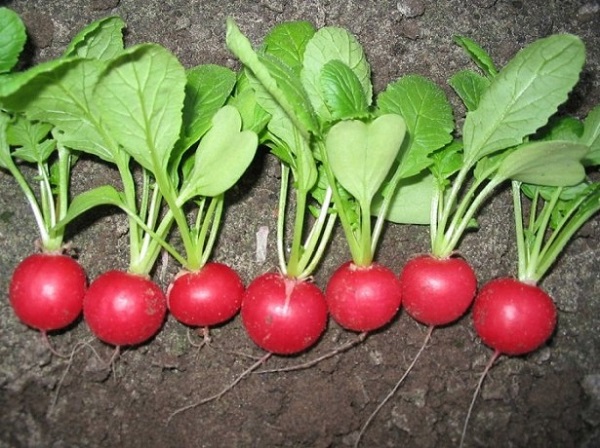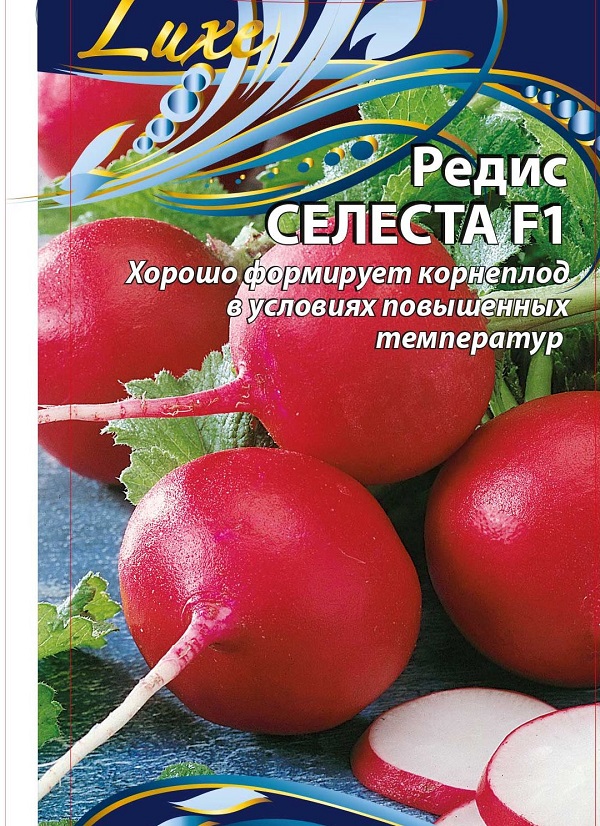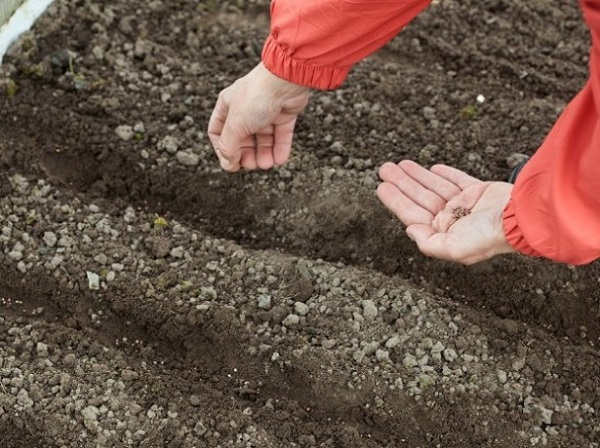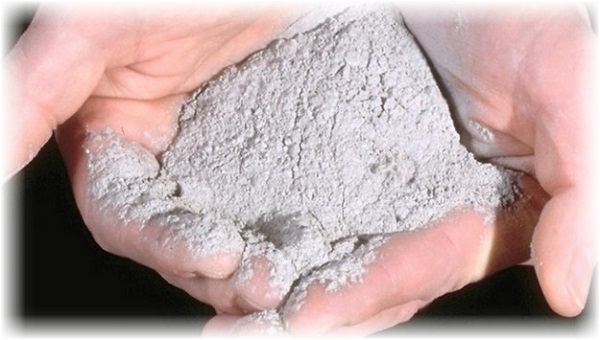Recently, breeders have been derived a large number of different varieties of vegetables and fruits. Scientists and radishes have not ignored their attention. This spring vegetable has a large variety of species and subspecies. But if you select on the principle of early ripeness and yield, then Celeste has no competitors.
Table of contents
Description of the varieties of radish Celesta
Radish Celeste hybrid was bred by Dutch scientists as an early ripe and high-yielding variety of spring vegetables. It is characterized by:
- the correct round shape of the root, without humps and depressions;
- bright, red-pink uniform color;
- undersized tops.
The variety was introduced and patented by the famous producer of vegetable hybrids “Enza Zaden” especially for farms, but amateur gardeners, having found out all the advantages of radish Celeste, took it into service. Now this hybrid is widespread and in demand in farms and in home gardening.
The hybrid is successfully cultivated from mid-March to the end of November and in our latitudes, gardeners speak only positively about it.

Advantages and disadvantages
Here is a description of the advantages of the variety, thanks to which it is widely distributed:
- excellent taste;
- early ripeness;
- high yield;
- ripens amicably, all seeding almost at the same time;
- not prone to strelkovuyu and flowering;
- has a long shelf life;
- very resistant to diseases and pests;
- during transportation retains all the original characteristics, both external and taste.
In addition to this, radish is distinguished by its suitability for cultivation in the open field,and in the conditions of the greenhouse.
Celeste has some drawbacks, but they fade amid the merits:
- the plant does not tolerate saline and dense soils;
- high humidity is detrimental to the hybrid;
- on excessively dry soils, it is also not possible to achieve high yields.

Preparing seeds for planting
To get a high yield, it is worth preparing a little seeds of radish for sowing, because for them the change of the microclimate around is a kind of stress. There is nothing difficult in the preparatory process. in order to collect a rich harvest it is enough to do such manipulations before sowing:
- Two days before sowing into the soil, the seeds must be soaked in a damp cotton cloth. Sometimes pre-soaking is carried out with the grain placed under the freezer to temper the future vegetable a little.
- Additionally, for disinfection for 12 hours, the seeds are kept in a weak solution of potassium permanganate.
After that, you can carry out seeding in a pre-prepared soil.

Soil and its preliminary preparation
Radish Celeste pleases especially high yields and fruits of excellent quality on soft, sandy soils. A good harvest will be on other soils, on clay and black soil will need to regularly loosen the top layer of soil.
Before sowing the seeds, the bed must be prepared. For this purpose, they dig it up and fertilize it with organic matter, the most suitable is considered to be diluted slurry. She will be able to provide the plant with maximum nutrients for normal growth and the formation of a root crop in such a short time. But drugs of chemical origin should not be used, they will adversely affect the sustainability of the grown bole.
Seeding
The hybrid perfectly bears fruit throughout the season, it is not afraid of short spring and autumn days, in early spring the crops are covered with foil.
The seeding process itself is as follows:
- on a loosened bed, make grooves, up to 2 cm deep. There should be at least 15 cm distance between rows.
- Finished grooves should be poured abundantly with water heated in the sun.
- Pre-soaked and disinfected seeds are sown in the grooves, at a distance of about 4 cm from each other.
- After this, the grooves are covered with a small layer of soil, but they are not trampled down.
It is recommended to completely remove it a few days after emergence of shoots.

Aftercare
In order to get the maximum possible yield from the sown bed, and then take care of the radish:
- Throughout the time, sprouts, and then the fruits need sufficient watering. It is important to ensure that the water does not stagnate in the garden bed with radish, otherwise the roots will rot.
- After 7-10 days after germination, it is recommended to feed the radish. To do this, use soaked chicken manure, it is diluted with water 1:10 and shed between the rows.
- Mulching of the soil on the bed with the root crop is carried out with dry humus and compost.
Top dressing should be moderately, if you re-fertilize the soil, then the majority of sowing will go to the arrows.
Diseases and pests
Hybrid Celeste has a high immunity against most diseases. Sometimes, if the irrigation regime is not followed, the fruit may be affected by putrefactive bacteria. The prevention of this is moderate watering and checking the soil before carrying out the process.
Of the pests most often, radish suffers from aphids; this can be prevented by using wood ash, which is sprinkled on the plant itself and between the rows between the beds every two weeks.

Harvesting and storage
Usually, if all the necessary conditions are met, root crops can be harvested 24 days after sowing. To get a higher quality crop and visual appeal, this period should be slightly increased to 30 days. It is after this period the radish Celeste will weigh up to 30 g each.
The hybrid crop perfectly transports transportation over long distances, and after three or four days its appearance will not change at all.
Growing radish Celeste varieties is not difficult.With a minimum expenditure of time and money, everyone can get a decent reward in the form of a root crop of up to 3.5 kg per square meter.
